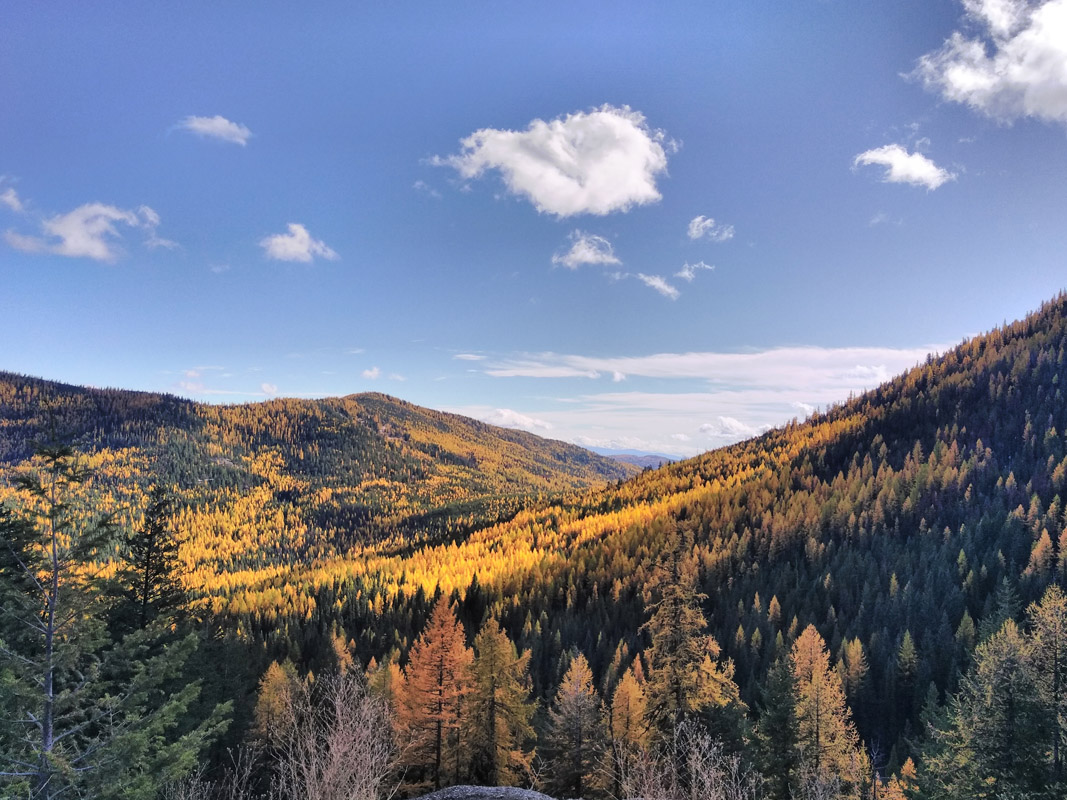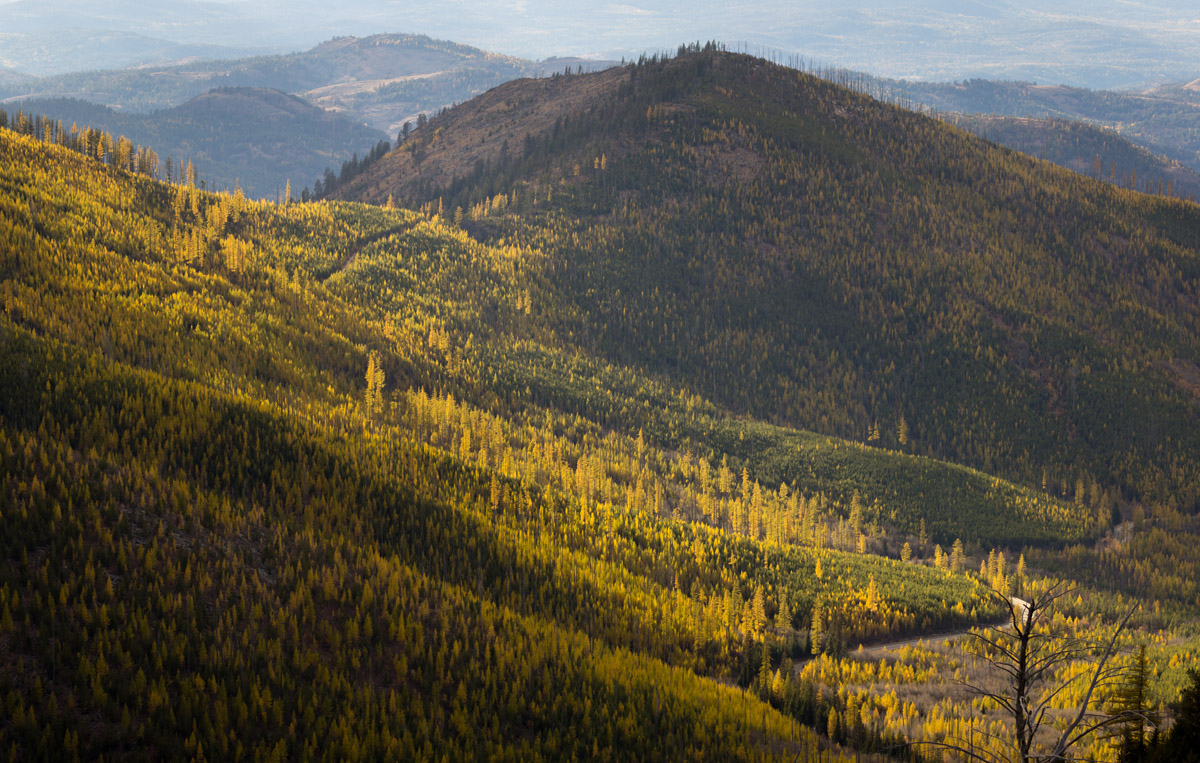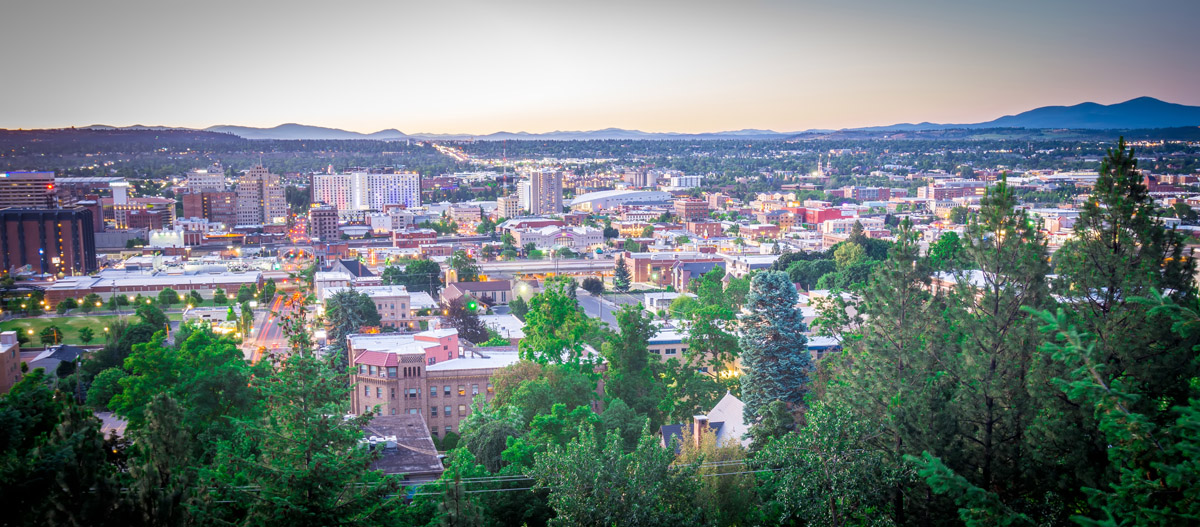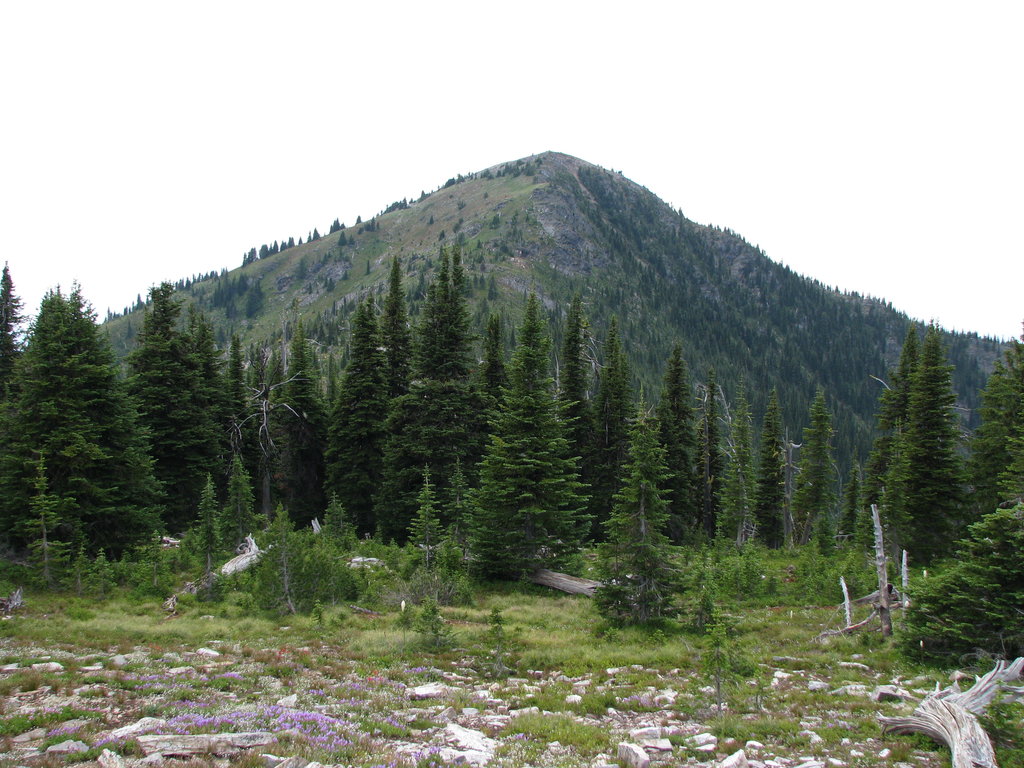Get PeakVisor App
Sign In
Search by GPS coordinates
- Latitude
- ° ' ''
- Longitude
- ° ' ''
- Units of Length

Yes
Cancel
Share ×

Scan the QR code and open PeakVisor on your phone
❤ Wishlist ×
Choose
Delete
Tucked in the northeastern corner of the Evergreen State, Colville National Forest encompasses 1.1 million acres of stunning summits and lush old-growth forest. The forest, which is bordered to the west by the Okanogan National Forest and the east by the Kaniksu National Forest, contains the Kettle River, Okanogan, and Selkirk mountain ranges, as well as the upper portion of the infamous Columbia River.
Over 10,000 years ago, Ice Age glaciers carved three major valleys found within the Colville National Forest. Today, numerous glacially carved summits, towering up to 7,000 feet above the valley floor, challenge the misconception that the only impressive peaks lie west of the Cascades.

Sherman Peak, the tallest in the forest, is a particularly popular destination for visitors to Colville. The Sherman Pass Scenic Byway is one of the few high-elevation passes that remains open throughout the winter and Sherman Pass, which crosses the Kettle River Range, offers access to what is considered one of the most scenic sections of the Kettle Crest and Colville National Forest. In route to various trailheads along Sherman Pass, including the trail to Wapaloosie Mountain and Sherman Peak, visitors will drive through the remanence of the 1988 White Mountain fire, a 20,000-acre forest fire that started from a lightning strike!
Aside from the well-known summits along Sherman Pass, popular peaks in the Colville National Forest include, Abercrombie Mountain, the most prominent in the forest and the second highest summit in eastern Washington, and Hall Mountain, a popular footpath for eastern Washington locals.
The forest is governed by four ranger station – Three Rivers Ranger Station in Kettle Falls, Republic Ranger Station in Republic, Newport-Sullivan Lake’s Station in Newport, and the Newport-Sullivan Lake’s station in Metaline Falls. Together, these ranger stations manage the four distinct districts found in the forest. However, the Salmo-Priest Wilderness, Lake Roosevelt National Recreation Area, and Little Pend Oreille National Wildlife Refuge can also be found within the forests’ boundaries.
The high-country Salmo-Priest Wilderness spans over 41,000 acres and sits on top of two Selkirk Range ridges that intersect at the summit of Salmo Mountain. The western ridge is notoriously rocky and steep-sided, while the eastern ridge is far more accessible. Salmo-Priest also contains the largest growth of virgin forest left in eastern Washington.
The Colville National Forest is home to a variety of wildlife, including black bears, bighorn sheep, cougars, bald eagles, Canadian Lynxes, moose, and the last remaining herd of caribou in the lower 48.
What most visitors to Washington might not expect, however, is a grizzly bear or wolf sighting. Washington’s grizzly population is notoriously low – just 10 bears are estimated to live in the North Cascades and the last verified sighting was in the late 90s. This stretch of forest, however, contains a portion of the Selkirk Mountains Grizzly Bear Recovery Area. Of the estimated 50-60 grizzlies living in the recovery area, roughly a dozen bears call Washington home.
Likewise, gray wolves are known to roam this region. Over the last several years, wolf recovery efforts have been in full effect in Washington state and the Colville National Forest is known to house one of the state’s largest populations. In other words, it might be worth keeping your eyes open for an extraordinary wildlife experience when visiting this stretch of wilderness.
Thirteenmile, which is ironically 8-16 miles long, features broad vistas, rolling hills, and stunning forested valleys. The trail ascends moderately for about half a mile before reaching its first glimpse of the San Poil River. Hikers that continue to climb will quickly be rewarded with incredible panoramic views of far-reaching canyons and wilderness. The trail is well-maintained, and in the spring, hikers will be rewarded with a beautiful display of wildflowers along the way.
Searching for grizzly bears? The Salmo-Priest loop is a remote footpath featuring impressive old-growth stands and high-country Colville summits. Along this 19-mile loop hikers will gaze at stunning vistas of the Selkirk Mountains and the Upper Priest River Valley, two of the most beloved landmarks in the Colville National Forest. Most hikers will spend two or three days on the Salmo-Priest Loop, taking side trips to Little Snowy Top Lookout and Snowy Top Mountain along the way.
Sherman Peak is an accessible summit hiker’s summit that sits along the scenic Sherman Pass. This six-mile loop utilizes part of the Kettle Crest Trail and leads hikers passed the 1998 White Mountain fire area to the rounded dome of Sherman Peak. From the summit, hikers can appreciate views of three unique geographical regions of Washington – the mountains to the northeast, drylands located in east-central Washington, and the Cascades to the west.

Nestled at the heart of Colville National Forest, 40-degrees North, sits near the town of Chewelah and operates privately on national forest land. The resort boasts a 5,774-foot summit elevation, 1,851-foot vertical drop, two peaks (Chewelah Peak and Angel Peak), and 82 marked trails. There are a variety of accommodations in nearby Chewelah or, visitors can make a day-trip from nearby Spokane.
Beaver Lodge is tucked within the Colville National Forest on pristine Lake Gillette, one of four interconnected lakes on the Little Pend Oreille Lakes chain. Open year round, Beaver lodge is best-known for its outstanding fishing, hunting, hiking, and, of course, winter recreation. Accommodations include a variety of primitive cabins, as well as RV and tent sites.
Spokane is a city built around nature and recreation, making it the ideal basecamp for exploring the Colville National Forest. The city, which sits just over an hour from the heart of the forest, offering visitors easy access to hiking and cycling trails, rock climbing, and winter recreation. Accommodations vary from boutique hotels to historic bed and breakfasts and visitors won’t have a hard time finding a delicious meal or a place to relax after a long day of adventure.

Explore Colville National Forest with the PeakVisor 3D Map and identify its summits.




